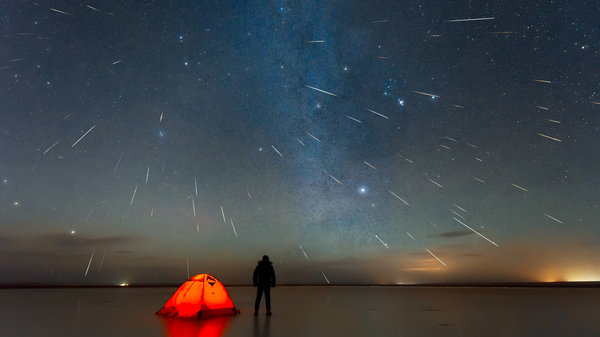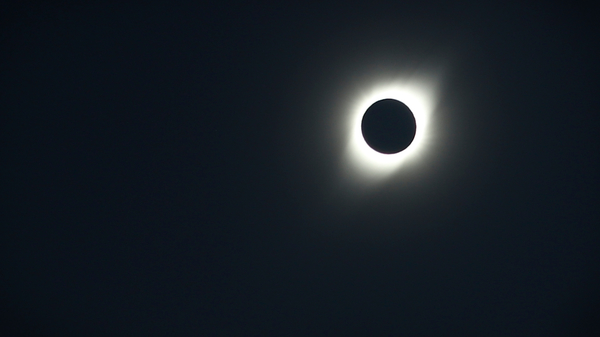Coming Attractions: 7 Big Astro Events in the Next 50 Years
Comets, asteroids, supermoons, and dazzling meteor showers will light up the skies in the next half-century.

The 2031 Leonid Meteor Storm may create an amazing display.
©iStockphoto.com/bjdlzx
The Crescent Moon, Saturn & Venus align in January 2025
Jan 2025: See the planets at their best
Exceptional Events
On any given night, the sky puts on a show. In dark places, it’s easy to get a view of common astronomical phenomena like shooting stars and changing Moon phases.
But far beyond the usual nightly displays, there are some rare cosmic occurrences on their way. Here’s a quick look at seven marquee events skywatchers can look forward to in the near (and not-so-near) future:
1. Year 2027: Long Solar Eclipse
The second-longest solar eclipse of the century will take place August 2, 2027, with the darkness of totality lasting around six minutes and twenty-four seconds. Best viewed from Northern Africa, the duration of this eclipse won’t be surpassed until the year 2114.
August 2027 solar eclipse: times, maps, and more The 2027 eclipse will feature more than six minutes of totality. ©Anne Buckle/timeanddate
How often do solar eclipses occur?
2. Year 2029: Asteroid Flyby
Streaking close to Earth on April 13, 2029, the 99942 Apophis asteroid will reach a distance of only 31,000 kilometers (19,600 miles) from our planet—which is ten times closer than the Moon.
This large mass, bigger than the Empire State Building, will become visible to the naked eye in clear, dark skies for around two billion people across much of Europe, Africa, and parts of Asia.
3. Year 2031: Leonid Meteor Storm
After the Tempel-Tuttle meteor approaches Earth in its current 33-year orbit, our planet will pass through the meteor’s fresh trail November 17-18, 2031.
The extraordinary amount of debris left in Tempel-Tuttle’s recent wake will shower down on us at a high rate, blazing through the sky as chunks of cosmic material burn through our atmosphere. This event could create an unforgettable shooting star display for stargazers across the globe.
4. Year 2040: Planetary Alignment
September 8, 2040 will see a rare alignment of Mercury, Venus, Mars, Jupiter, Saturn, and our Moon. On that date, these five so-called “naked eye” planets will be visible in the same small band of sky as the crescent Moon.


In 2040, five nearby planets will appear in the same section of the night sky.
©timeanddate.com
Distance, brightness, and size of planets
5. Year 2052: Supermoon of the Century
On December 6, 2052, our satellite will appear 14% bigger than normal as it closes to a relatively minor distance of 356,424 kilometers, or 221,472 miles. This will be the closest Supermoon of the century.
6. Year 2061: Halley’s Comet
A short period comet on a 76-year orbit of Earth, Halley should be easy to see from dark places on our planet during its next flyby on July 29, 2061. This is one of our longest-known cosmic visitors, with the first sighting of the comet appearing in reports dating back more than 2000 years.

People have been tracking Halley for centuries. This 19th-century etching traces the comet’s 76-year orbit around the Sun.
©iStockphoto.com/powerofforever
7. Year 2065: Venus Transits Jupiter
Seen from Earth on November 22, 2065, Venus will transit, or appear to pass in front and block the view of Jupiter, marking the first viewable transit of solar system planets since 1818.